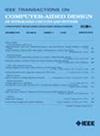Bridging the Gap From Vague Design Requirements to Feasible Structure: Deep Learning Model for Parameterized MEMS Sensor Design
IF 2.7
3区 计算机科学
Q2 COMPUTER SCIENCE, HARDWARE & ARCHITECTURE
IEEE Transactions on Computer-Aided Design of Integrated Circuits and Systems
Pub Date : 2024-11-14
DOI:10.1109/TCAD.2024.3499897
引用次数: 0
Abstract
The design of MEMS sensor presents a significant challenge in identifying feasible structures that align with specific performance criteria. Traditionally, this process demands extensive design expertise and iterative simulations, leading to time-intensive workflows. While recent advancements have introduced deep learning (DL) models to expedite this process, they are limited to handling simple scenarios with precise performance values and fixed dimensions as inputs, often overlooking the uncertainty inherent in real design scenarios, such as vague range requirements and variable input dimensions. To address this issue, this study introduces a novel DL-based design model along with corresponding modeling strategies. The proposed model consists of a search network (SN), a validation network (VN), and a precision optimizer (PO). Initially, design requirements of various types and dimensions are transformed into a standardized input vector to address diverse design scenarios, which is then processed by the SN to generate a feasible structure. The VN, trained prior to the SN, validates the structure and generates training data for the SN. In cases where the model output fails to sufficiently align with the requirements, the PO is deployed to minimize the design error. Validation of the proposed model was conducted using a piezoresistive acceleration sensor across 100000 distinct design requirements. The results demonstrate an overall design accuracy (DA) of 92.64% on the testing data. Following 1000 iterations leveraging the proposed PO, the DA improves to 93.84%. Notably, each design iteration and optimization using the PO only requires approximately 0.1 ms, significantly boosting the design efficiency of MEMS sensors.弥合从模糊设计需求到可行结构的差距:参数化MEMS传感器设计的深度学习模型
MEMS传感器的设计在确定符合特定性能标准的可行结构方面提出了重大挑战。传统上,这个过程需要广泛的设计专业知识和迭代模拟,导致时间密集的工作流程。虽然最近的进展已经引入了深度学习(DL)模型来加速这一过程,但它们仅限于处理具有精确性能值和固定维度作为输入的简单场景,往往忽略了实际设计场景中固有的不确定性,例如模糊的范围要求和可变的输入维度。为了解决这一问题,本研究引入了一种新的基于dl的设计模型以及相应的建模策略。该模型由搜索网络(SN)、验证网络(VN)和精度优化器(PO)组成。首先,将各种类型和尺寸的设计需求转换成一个标准化的输入向量,以满足不同的设计场景,然后由SN进行处理,生成可行的结构。在SN之前训练的VN验证结构并为SN生成训练数据。在模型输出不能充分符合需求的情况下,将部署PO以最小化设计错误。采用压阻式加速度传感器对100000种不同的设计要求进行了模型验证。测试结果表明,该方法的总体设计精度(DA)为92.64%。在利用提议的PO进行1000次迭代之后,DA提高到93.84%。值得注意的是,使用PO的每次设计迭代和优化只需要大约0.1 ms,大大提高了MEMS传感器的设计效率。
本文章由计算机程序翻译,如有差异,请以英文原文为准。
求助全文
约1分钟内获得全文
求助全文
来源期刊
CiteScore
5.60
自引率
13.80%
发文量
500
审稿时长
7 months
期刊介绍:
The purpose of this Transactions is to publish papers of interest to individuals in the area of computer-aided design of integrated circuits and systems composed of analog, digital, mixed-signal, optical, or microwave components. The aids include methods, models, algorithms, and man-machine interfaces for system-level, physical and logical design including: planning, synthesis, partitioning, modeling, simulation, layout, verification, testing, hardware-software co-design and documentation of integrated circuit and system designs of all complexities. Design tools and techniques for evaluating and designing integrated circuits and systems for metrics such as performance, power, reliability, testability, and security are a focus.

 求助内容:
求助内容: 应助结果提醒方式:
应助结果提醒方式:


